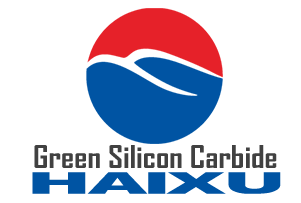1. Core Function: Superior Surface Preparation
Cleaning: Removing all contaminants (rust, mill scale, old paint, salts, oil). Creating a Profile (Anchor Pattern): Etching the metal surface to increase its surface area and create mechanical “teeth” for the coating to grip onto.
2. Why Choose Green Silicon Carbide for Pipeline Blasting?
3. Typical Grit Sizes and Their Applications in Pipeline Work
Coarse Grits (e.g., 16# to 36#): Primary Use: New Construction / Heavy Rust Removal. This is the most common application for pipelines. It is used for initial blast cleaning to achieve a Near-White Metal (Sa 2.5) or White Metal (Sa 3) condition, as defined by international standards (e.g., ISO 8501-1). It creates an optimal anchor pattern (typically 50-100 microns) for thick-film epoxy or fusion-bonded epoxy (FBE) coatings.
Medium Grits (e.g., 60# to 120#): Primary Use: Maintenance/Repair Blasting. Used for spot repairs or recoating projects where the goal is to “feather” the edges of the existing coating and create a profile on the exposed steel that matches the surrounding area.
Fine/Very Fine Grits (e.g., 600# to 6000#): Primary Use: Specialized Applications / Final Finish. As mentioned in the previous discussion, these are for highly specialized situations. 6000# is an ultra-fine powder used for: Creating a very shallow, delicate profile for thin-film, high-performance coatings. De-peening or refining a profile created by a coarser grit. Cleaning and activating surfaces (like stainless steel) without significantly altering the dimensions.
4. The Standard Surface Preparation Process Using Green SiC
Inspection & Degreasing: The pipe is inspected, and any oil or grease is removed with solvents. Abrasive Blasting (The Key Step): Green SiC abrasive is propelled at high velocity onto the pipe surface using a blast pot and compressor. The objective is to remove all rust and mill scale until the surface meets the required standard (visually compared to ISO 8501-1 photographic comparators). The blasting creates a clean, roughened “anchor profile.”
Profile Verification: The depth of the profile is measured with a profilometer to ensure it meets the coating manufacturer’s specification. Dust Removal: All abrasive dust and residues are thoroughly removed using clean, dry air or vacuum systems. This is a critical step. Coating Application: The protective coating (e.g., epoxy, polyurethane) is applied immediately after preparation, before any surface oxidation (“flash rust”) can occur.
Advantages vs. Disadvantages
Conclusion
Critical pipelines (subsea, arctic, high-pressure). Coatings with strict adhesion requirements. Situations where speed and efficiency of the blasting process are paramount.

